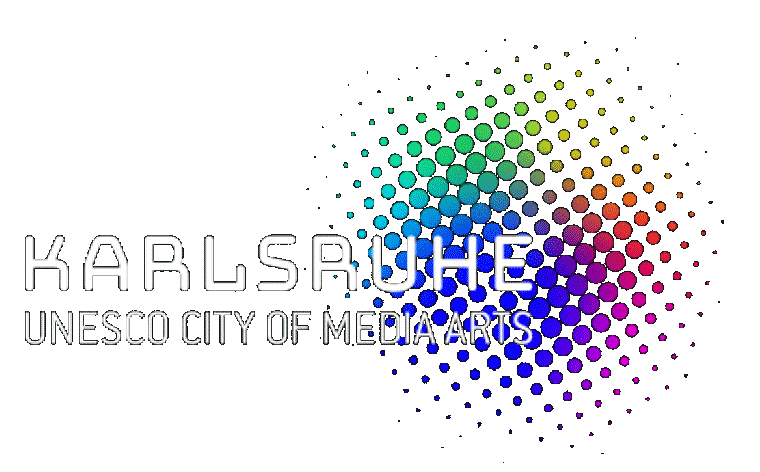As part of Media Art is Here, the augmented reality exhibition SensUs. Augmented Nature-Cultures can be viewed on Friedrichsplatz in front of the State Museum of Natural History in Karlsruhe, from August 5 to September 17. The artworks will be on display during the RIXC Art Science Festival: Crypto, Art and Climate at Esplanade Park and the Latvian Museum of Natural History from September 21 to November 11.
The exhibition is a joint production between RIXC (Centre for New Media Culture) in Riga and the Karlsruhe-based art association NAIA (Naturally Artificial Intelligence Art) and presents 8 virtual media artworks created by artists from Riga and Karlsruhe. The artists were invited by curators Daria Mille, Rasa Smite and Raitis Smits to use AR technology to make the invisible processes in urban nature visible, to explore the symbiotic relationship between social and ecological systems, and to explore the historical and contemporary pathways of nature-culture sites in the city. Due to their size, the artworks unfold their full effect in the open, urban space. Before the official opening, the public was able to get a first glimpse of the artworks at the Karlsruhe Museum Night KAMUNA on August 5 in cooperation with the State Museum of Natural History Karlsruhe.
Although rooted in Karlsruhe and developed primarily for the UNESCO Creative City of Media Arts programme, the SensUs AR exhibition aims to extend its nature-culture explorations to international contexts by linking up with Riga, which has yet to apply for UNESCO Creative City status, and Toronto.
German artist Isabella Münnich explores interactive landscapes in her artwork mush/room: growing together. During her daily walks in the forests around Karlsruhe, the artist continuously observed the mushrooms growing on fallen trees and their cycle of growth and decay. The artist captured these transformations of natural objects using digital scanning techniques (photogrammetry) and created digital sculptures that can be experienced by approaching them, walking around them or even into them to see the impressive structures of the digitally transformed mushrooms in detail.
The speculative artwork Vegetable kingdom, Vegetable Anarchy by Ukrainian artist Anna Manankina, living in Karlsruhe, is an AI-generated plant species created by using images from the Natural History Museum. The plants are in an ongoing mutation, evolving to a stage where humans become redundant as each plant can take on the form of a human. The South Korean artist Jung Eun Lee, who also lives in Karlsruhe, draws in her work Pond Creatures: Becoming One, Being Plural, associative parallels between the biological being and social existence of both -non-human (pond creatures) and human (viewers) entities. The artwork is based on the artist’s observations of “pond creatures” living in the aquariums she built herself and their unique way of symbiotic living.
Latvian artist Rihards Vītols‘ AI-generated 3D artwork Mežs 2.0 (Forest 2.0) is a utopian, speculative vision of new, more resilient tree species that simulates proposals and challenges for future changes in nature and the environment. The artist uses AI algorithms to continue the evolution and mutation of species introduced in his Mežs 1.0 project, creating a new collection of unimaginable tree species. The artwork Cultivation of Domestication by Latvian artist Jurģis Peters‘ is based on historian J.N. Harari’s contradictory hypothesis that the first “domesticated” grain (wheat) that contributed to the agricultural revolution actually domesticated us, not the other way around. AI-generated images are used to create an interactive 3D object that addresses issues of plant-human relations in changing positions of power.
The installations Omnisence by Latvian artist Zane Zelmene and Soil Mate by Sabine Šnē, also from Latvia, were first exhibited at Esplanade Park in Riga, Latvia, as part of the last exhibition curated by RIXC on the Sensus Art Platform in 2021. Omnisence uses historical materials and evidence to reconstruct the landscapes of Esplanade Park in Riga in different eras – from prehistory and the Middle Ages, when Mount Kube appears there, to the last century in the form of spheres with 360-degree photographs. Soil Mate, on the other hand, explores the relationship between art, mythology and science. Inspired by the aesthetics of stone-age Venus figures, the virtual 3D sculpture represents the contemporary version of Gaia. It is covered with a texture created from various soil samples found in Esplanade Park in Riga.
The curators and the artists are organising guided tours during the exhibition in both Riga and Karlsruhe, as well as an additional guided tour that will take place during the opening programme of the SensUs exhibition in Riga, which will lead through Esplanade Park on Thursday 21 September at 12 a.m.
Those interested in the guided tour in Riga can find the link to register here.
Further information here







